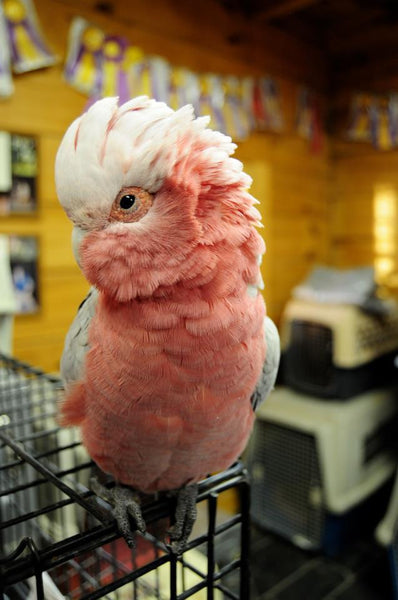Hi everyone,
Joined here to ask a question that's been on my mind recently. Why aren't bioactive bird setups a thing that's done more often (if at all)?
Let me elaborate a bit. I'm a reptile guy by nature, but I love the larger birds as well. In reptile keeping, the "traditional" way to do things has always been to set up a cage large enough for the animal, clean the cage whenever needed, feed, water, and if you choose to, socialize your animals. That's pretty much the basics of reptiles, amphibians, and invertebrates. Now, going into this - I absolutely realize that birds and mammals tend to be far more complex than cold-blooded animals, just by nature. But, hear me out.
Somewhere along the line, people realized that a large step of this process can be taken out - the cleaning. By keeping animals in a very naturalistic setup, with a clean up crew consisting of small invertebrates (usually springtails and isopods), a completely maintenance-free enclosure can be built - these are known as bioactive setups. Using more natural substrates, a living clean up crew, and optionally natural furnishings, it's possible to build an ecosystem that is entirely self-sustaining, and works on even the largest animals in our hobby. A good example would be large monitors - they eat a lot, produce a ton of waste, and yet we can still create a captive environment for them that is nearly maintenance free, allowing us to spend more time interacting with and observing the animals, and less time focusing on maintenance.
This has even been used in some cases with small mammals, like hedgehogs. Almost any poison dart frog display you can find is set up to be bioactive, for ease of maintenance. And the list goes on and on and on.
Now, here's where things change a bit - this entire concept of bioactivity has not caught on with birds yet (to my knowledge). Substrates seem to be replaced, even in the largest of outdoor setups, with bare concrete, sand, or gravel floors that are easier swept or hosed clean. But, I don't see any reason that in a large outdoor (or even indoor) aviary, a natural substrate, with healthy populations of invertebrates to handle waste, couldn't be utilized to make cleaning non-existent.
What is the reasoning behind this not being a thing in the bird hobby? Is it that the majority of keepers just don't know this exists? Has it been tried, and failed for some reason? Would love to hear some thoughts and discuss a bit further.
Take care,
Drew
Joined here to ask a question that's been on my mind recently. Why aren't bioactive bird setups a thing that's done more often (if at all)?
Let me elaborate a bit. I'm a reptile guy by nature, but I love the larger birds as well. In reptile keeping, the "traditional" way to do things has always been to set up a cage large enough for the animal, clean the cage whenever needed, feed, water, and if you choose to, socialize your animals. That's pretty much the basics of reptiles, amphibians, and invertebrates. Now, going into this - I absolutely realize that birds and mammals tend to be far more complex than cold-blooded animals, just by nature. But, hear me out.
Somewhere along the line, people realized that a large step of this process can be taken out - the cleaning. By keeping animals in a very naturalistic setup, with a clean up crew consisting of small invertebrates (usually springtails and isopods), a completely maintenance-free enclosure can be built - these are known as bioactive setups. Using more natural substrates, a living clean up crew, and optionally natural furnishings, it's possible to build an ecosystem that is entirely self-sustaining, and works on even the largest animals in our hobby. A good example would be large monitors - they eat a lot, produce a ton of waste, and yet we can still create a captive environment for them that is nearly maintenance free, allowing us to spend more time interacting with and observing the animals, and less time focusing on maintenance.
This has even been used in some cases with small mammals, like hedgehogs. Almost any poison dart frog display you can find is set up to be bioactive, for ease of maintenance. And the list goes on and on and on.
Now, here's where things change a bit - this entire concept of bioactivity has not caught on with birds yet (to my knowledge). Substrates seem to be replaced, even in the largest of outdoor setups, with bare concrete, sand, or gravel floors that are easier swept or hosed clean. But, I don't see any reason that in a large outdoor (or even indoor) aviary, a natural substrate, with healthy populations of invertebrates to handle waste, couldn't be utilized to make cleaning non-existent.
What is the reasoning behind this not being a thing in the bird hobby? Is it that the majority of keepers just don't know this exists? Has it been tried, and failed for some reason? Would love to hear some thoughts and discuss a bit further.
Take care,
Drew



